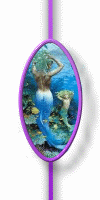|
BRUXISM
(NIGHT GRINDING) SENSITIVITY
BRUXISM (NIGHT
GRINDING)
It is the habitual grinding of teeth in the
night (while sleeping) or as a habit. It can be in the form of taping
of teeth, grinding of teeth or clinching of teeth. Many causes have
been suggested for this habit like:
(1) Discrepancy in the way teeth fits into each other, this may
lead to tension in the muscles or discomfort, hence the patient
constantly tries to achieve a comfortable position of teeth.
(2) Allergies.
(3) Nutritional deficiencies and
(4)Gastric disturbances are also said to play a role.
But the most common cause is believed to be
emotional tension. Bruxism is supposed to be one of the several
ways by which we try to relieve the pent up tension. Some occupations,
which requires high amount of concentration, precision or physical
activity may also lead to bruxism.
EFFECT:
This type of grinding habit may lead to excessive attrition
(wearing away) of tooth structure. It can also lead to injury of
the supporting structure of tooth resulting in loosening of tooth,
movement of tooth from its position, or downward shift of gums with
loss of bone support. It can even lead to injury of tempero mandibular
joint (where jaw attaches to skull), change in the way jaw opens
and closes, and difficulty in opening the mouth. It is even reported
to lead to headache e.t.c.
TREATMENT:
Special appliance may be constructed to immobilize the jaw or to
minimize the injury to supporting structure of tooth. These appliances
are typically worn during night. Besides these if the cause is suspected
to an emotional one then it needs to be suitably treated.
SENSITIVITY
It is one of the most common cause of varying degree of pain. A
tooth is said to be sensitive when different type of stimuli like,
hot, cold, sweet, sour, pressure changes, drying, osmotic changes
e.t.c. , leads to sensation that may range from mild pain lasting
a few seconds to severe pain over a prolonged period of time. One
feature that is common in all types of sensitivity is that the sensitivity
starts or increases on application of stimulus and hence the patient
learns to associate the sensation to a particular form of stimulus.
The sensation of pain is due to stimulation of odontoblasts (these
are tooth forming cells that are present in the
pulp). Though the exact mechanism of how this happens is not
established, the most excepted explanation is Hydrodynamic Theory,
according to this theory when there is fluid movement inside the
dentinal tubules (they are the building blocks of dentin
and are microscopic hollow structure that is filled with fluid)
the pain sensation is picked up by the nerve endings which are present
inside the dentinal tubules near the pulp. This fluid level changes
when the external seal of the dentinal tubule gets broken as in
the case of cavity preparation, carries, aberration, attrition,
erosion, e.t.c.
Root Surface Sensitivity:
This occurs in case of gingival recession or exposed root surface.
The pain is usually very severe. The causes for this type of sensitivity
are same as mentioned above and the theory explaining it is also
the same.
Post Operative Sensitivity:
It the form of sensitivity that arises after a filling is done or
after any restorative work. This is believed to occur due to (1)
leakage from the side of filling (2) expansion or contraction of
the filling material. These types of sensitivity can lasts up to
6 months and goes off after that.
Treatment:
Since sensitivity arises due to cut or exposed dentinal tubules,
the primary aim of treatment is seal these dentinal tubules so that
the fluid inside them is not disturbed. To achieve this goal a lot
of treatment have been tried with varying degree of success some
of them are: desensitizing tooth paste, topical fluoride, fluoride
rinse, dentinal bonding agent, iontopheresis, e.t.c. But when these
above mentioned methods fail, then the only method left is to use
restorative treatment like fillings, crown e.t.c.
BRUXISM (NIGHT GRINDIN)
SENSITIVITY
|







